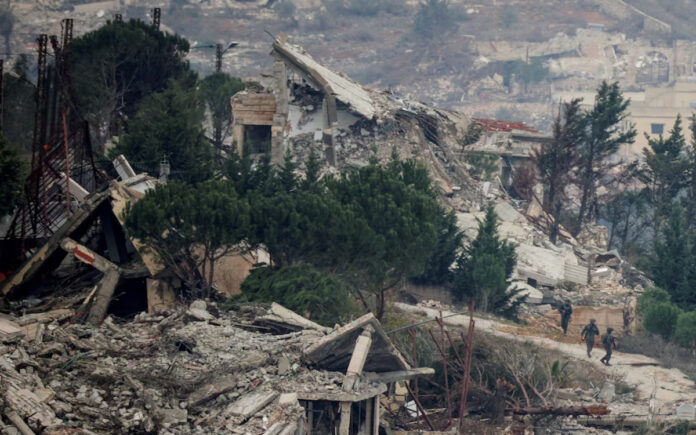Beirut: The ceasefire that ended relentless Israeli airstrikes and brought a fragile peace to Lebanon emerged after weeks of intense negotiations and remained uncertain until the final hours.
U.S. envoy Amos Hochstein played a pivotal role, shuttling between Beirut and Jerusalem despite distractions from domestic elections, to forge a deal that required French involvement and was nearly jeopardized by international arrest warrants for Israeli leaders.
Last month, Israel indicated it had met its primary military objectives in Lebanon by delivering severe blows to Iran-backed Hezbollah. However, securing a ceasefire agreement proved complex.
Diplomatic maneuvers, a soccer match, and U.S. pressure culminated in Tuesday night’s truce, according to officials and diplomats. For 14 months, Israel and Hezbollah—longstanding adversaries—had been engaged in cross-border hostilities, initiated by Hezbollah’s rocket attacks in support of the Palestinian militant group Hamas.
Escalation and Turning Points
The conflict escalated over the summer, pulling Iran, Hezbollah’s main sponsor, closer to the fray and threatening a broader regional war. In September, Israel intensified its military campaign, employing precision strikes that dismantled Hezbollah’s leadership. By the end of the month, Israeli tanks had crossed the Lebanese border, leaving large portions of southern Lebanon in ruins and displacing over a million people.
With Hezbollah under immense strain, Israeli Prime Minister Benjamin Netanyahu suggested in October that conditions were ripe for a ceasefire. Despite calls from within Israel for more decisive outcomes, including the creation of an uninhabited buffer zone in southern Lebanon, the toll of a two-front war was weighing heavily on Israeli society.
Behind-the-Scenes Diplomacy
“Once the will and desire align, you sense that the end is near,” said a senior U.S. administration official during a briefing.
Amid continued fighting, Hezbollah’s leadership showed new openness to a ceasefire that no longer hinged on a truce in Gaza. Lebanon’s veteran Parliament Speaker Nabih Berri, an ally of Hezbollah, was tasked with leading negotiations.
Hochstein worked closely with Israeli negotiators under Strategic Affairs Minister Ron Dermer, providing daily updates to U.S. National Security Adviser Jake Sullivan. France, led by Foreign Minister Jean-Noel Barrot, played a crucial supporting role. Barrot’s November visit involved long discussions with Dermer, focusing on phased troop redeployments.
Despite frustrations over the slow progress, particularly on Lebanon’s side, a deal began to take shape. It was based on strengthening the implementation of U.N. Security Council Resolution 1701, which had ended the 2006 Israel-Hezbollah war.
Also Read | ‘Everything is Lost’: Lebanese Communities Count the Cost of Conflict
Last-Minute Challenges
Key sticking points included Israel’s insistence on retaining the right to retaliate against Hezbollah violations. A compromise emerged through verbal assurances, granting both sides the ability to defend themselves while aiming to avoid renewed conflict.
Another challenge involved Hezbollah’s arms supply routes through Syria. Israel issued warnings to Syrian President Bashar al-Assad and escalated strikes near critical Syrian infrastructure to deter shipments.
Talks reached a critical juncture following Donald Trump’s U.S. presidential election victory. U.S. officials emphasized the strategic benefits of the deal to the incoming administration.
Tensions flared again when the International Criminal Court issued arrest warrants for Netanyahu and former Israeli defense minister Yoav Gallant. Diplomatic interventions by French President Emmanuel Macron, prompted by calls from U.S. President Joe Biden, helped defuse the crisis, ensuring French participation in the negotiations and Lebanon’s agreement to the truce.
A Fragile Peace
The final agreement came together under immense international pressure, with Hochstein threatening to abandon mediation if progress stalled. By Wednesday, bombs stopped falling, marking a tentative end to a devastating chapter.



